Advertisers recognise that brand loyalties and consumer habits formed when children are young and vulnerable will be carried through to adulthood. The CEO of Prism Communications noted: “they aren’t children so much as what I like to call ‘evolving consumers’.” Toys ‘R’ Us president, Mike Searles, says “If you own this child at an early age... you can own this child for years to come.”
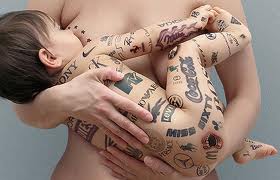 And the age at which children are being targeted is getting younger. A conference in 2000 in New York, entitled “Play-Time, Snack-Time, Tot-Time: Targeting Pre-Schoolers and their Parents”, aimed to “create brand loyalty at an early age that will be remembered for generations” and included workshops on how to market to pre-school children and how to research their wants and needs. According to media critic Douglas Rushkoff:
And the age at which children are being targeted is getting younger. A conference in 2000 in New York, entitled “Play-Time, Snack-Time, Tot-Time: Targeting Pre-Schoolers and their Parents”, aimed to “create brand loyalty at an early age that will be remembered for generations” and included workshops on how to market to pre-school children and how to research their wants and needs. According to media critic Douglas Rushkoff:
The fresh neurons of young brains are valuable mental real estate to admen. By seeding their products early, the marketers can do more than just develop brand recognition; they can literally cultivate a demographic’s sensibilities as they are formed.
In addition to forming life-long loyalties whilst young, marketers recognise that children can form attachments to products well before they are ready to buy them. A Ford executive noted: “Car branding indirectly happens at every stage of life… Ford’s goal is to be there at every stage of the consumer’s life. The earlier, the better.”
Media buyer, Irwin Gotlieb, concurred: “If the first time you saw an ad for a Mercedes was when you could finally afford it, then it is too late. You have to create aspiration in the male by the age of 12 or they won’t be buying one at 35.”
Increasingly corporations differentiate their products on the basis of brand because there is so little difference between products of the same type.
McNeal advises those wanting to get brand loyalty amongst children to firstly create awareness by taking advantage of the child’s curiosity and eagerness to learn: “Therefore, frequent presentations of the firm’s logo, slogans, and brand names within the child’s environment will produce awareness of a firm.” He cites Coca-Cola as a good example of this with its advertising and logos maintaining a “major presence in practically everyone’s environment” including children’s.
 In an effort to reach the very youngest potential consumers, well before they can actually buy their products, “companies such as Ralph Lauren and Harley Davidson are now targeting infants and toddlers by putting out items like tiny T-shirts and sweatshirts with their logos on them”. Other companies sell “nursery linens, mobiles, and crib toys decorated with brand logos or images or licensed characters” so as to teach babies their brand
In an effort to reach the very youngest potential consumers, well before they can actually buy their products, “companies such as Ralph Lauren and Harley Davidson are now targeting infants and toddlers by putting out items like tiny T-shirts and sweatshirts with their logos on them”. Other companies sell “nursery linens, mobiles, and crib toys decorated with brand logos or images or licensed characters” so as to teach babies their brand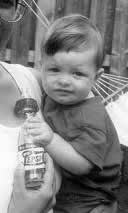 logo before they can even say them. For example, Pepsi logos can be found on nipple-topped baby bottles. “The more frequently an infant sees an image, the more familiar it becomes, bringing comfort and, eventually, emotional attachment.”
logo before they can even say them. For example, Pepsi logos can be found on nipple-topped baby bottles. “The more frequently an infant sees an image, the more familiar it becomes, bringing comfort and, eventually, emotional attachment.”
Modern children who watch television can recognise brands by the age of 2, before they can even read. Four out of five children recognise the McDonald’s brand by the time they are three years old (even before some of them know their own surnames), and they know that McDonald’s sells hamburgers.
Whilst targeting marketing at toddlers is thought to be unacceptable by most people, marketers often get away with it by giving it an educational façade, for example, by featuring brand logos and characters on ‘educational’ posters, videos and books.
The second step is to interest the child in the company symbols as “need satisfiers”. This may involve pairing a product with a child’s interests, for example, collectable cards or toys in packets or clubs for children such as the Kraft Cheese & Macaroni Club.
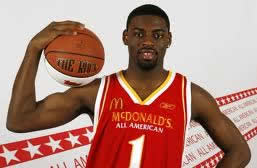 Brand bonding can be helped along by associating the brand with pleasant experiences. This is done by sponsoring events such as concerts, sporting fixtures, festivals, sports leagues and entertainment outlets. For example Denny’s restaurants sponsor Major League Baseball, and McDonald’s sponsors Fox Kids Network and the National Basketball Association (NBA). According to McDonald’s internal papers, its association with the NBA is intended to encourage those watching its ads to associate its french fries with “the excitement and fanaticism people feel about the NBA”.
Brand bonding can be helped along by associating the brand with pleasant experiences. This is done by sponsoring events such as concerts, sporting fixtures, festivals, sports leagues and entertainment outlets. For example Denny’s restaurants sponsor Major League Baseball, and McDonald’s sponsors Fox Kids Network and the National Basketball Association (NBA). According to McDonald’s internal papers, its association with the NBA is intended to encourage those watching its ads to associate its french fries with “the excitement and fanaticism people feel about the NBA”.
Brands today are presented as more than just a set of products manufactured by a particular corporation, but as representing a set of experiences or values, as a lifestyle. Advertisers seek to associate their brands “with culturally valued images, feelings and sensibilities”.
It is for this reason that companies like to associate their brands with television shows 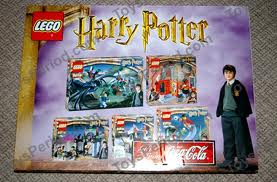 and movies. When Coca-Cola bought global marketing rights for Harry Potter for $150 million, its press release claimed that it was “reinforcing the core values and attributes shared by Harry Potter and Coca-Cola”.
and movies. When Coca-Cola bought global marketing rights for Harry Potter for $150 million, its press release claimed that it was “reinforcing the core values and attributes shared by Harry Potter and Coca-Cola”.
Celebrity endorsements are also used to associate brands with the feelings of loyalty and admiration that those celebrities inspire amongst young people. Companies such as Coca-Cola, Pepsi and Nike spend millions on signing up pop stars or sports stars for this purpose.
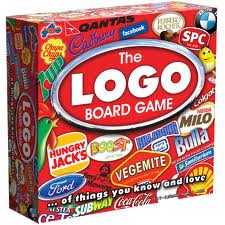 McNeal’s third step in achieving brand loyalty is getting children to believe in the firm and its products as providers of satisfaction in themselves. For products that are not used by children this may mean that the products or the brand need to be aligned with values such as environmental protection, patriotism, good health. The objective is to create an emotional connection between children and brands. Successful brands “generate recognition, familiarity and even affection amongst children”.
McNeal’s third step in achieving brand loyalty is getting children to believe in the firm and its products as providers of satisfaction in themselves. For products that are not used by children this may mean that the products or the brand need to be aligned with values such as environmental protection, patriotism, good health. The objective is to create an emotional connection between children and brands. Successful brands “generate recognition, familiarity and even affection amongst children”.
Companies go out of their way to turn brands into friends. Cheryl Berman, a founder of KidLeo, a consulting arm of advertising agency Leo Burnett, advised marketers to “connect with kids as an enduring, responsible friend”. McDonald’s seeks “to make customers believe that McDonald’s is their ‘Trusted Friend’.”
The Geppetto Group worked with psychologists to study the character of different children’s relationships so as “to mirror the best of those relational feelings in building product relationship messages” and therefore develop “effective brand imaging” imbued with “kid-familiar personality characteristics.” Its clients include Coca-Cola, Kraft, Frito-Lay and McDonald’s.
Advertisers D’Arcy Masius Benton & Bowles explain how it is desirable to create a personality for products being advertised to small children in order to promote loyalty:
Identify and individualize some characteristic of the brand and endow it with ‘magic power’ which may not be believed at the rational level but can create an aura about the brand. Brand names should receive special emphasis and repetition….
The latest research into brand bonding uses the term “engagement”. According to the chief research officer of the Advertising Research Foundation (ARF), Joe Plummer: “The heart of engagement is ‘turning on’ a mind…. This is a subtle, subconscious process in which consumers begin to combine the ad’s messages with their own associations, symbols and metaphors to make the brand more personally relevant.” Modern advertisements do not seek to outline the advantages of a product so much as to “seduce the consumer into beginning that subconscious processing of the brand.”
Brands are used as expressions of lifestyle and identity and, accordingly, identification with particular brands helps to define and communicate group identity, social status and aspirations. As one marketing theorist has written, the "presence of a brand (or even the attitudes held toward it) can serve to define a person with respect to others", such that the "brand becomes an extension or an integral part of the self".